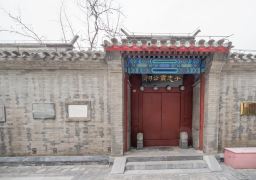Rizhu Ling is located in the southeast of PingShui Town, Shaoxing County, about fifty miles from the city, and belongs to the remaining ridge of Kuaiji Mountain. It runs southeast, with an elevation of approximately 516 meters. The mountain is steep, with protruding rocks, winding ridge paths, and a strategically dangerous terrain. According to the Song Dynasty’s Wu Chu Hou’s ‘Qingxiang Zaji’: ‘In the past, Ou Ye cast swords, which were not successful elsewhere, but were cast successfully here in a day, hence the name Rizhu Ling.
‘ The ancient path of Rizhu Ling extends from Wanghua Village in PingShui Town, Shaoxing County, to Suosi Bridge in Meiyuan Village. Based on oral tradition and architectural style, it is judged to be from the Ming to Qing Dynasty. A well-preserved section exists from Zhujia Village to Suosi Bridge in Meiyuan Village, running north-south, approximately 2000 meters long, with a road width of 1.3-1.5 meters. There are more than 2000 stone steps. The ancient path, tea pavilion, Xiama Bridge, corridor, and Suosi Bridge are still preserved. The tea pavilion is a three-room flat-roofed building, facing northwest from the southeast; the main room has a four-column and five-beam structure, while the side rooms have a five-column and seven-purlin structure; the ground is paved with stone slabs. Four stone tablets are embedded in the inner walls of the tea pavilion: 1. ‘Rebuilding the Tea Pavilion’, signed in the twenty-second year of the Republic of China; 2. ‘Aiding Tea Stele’, signed in the fifty-ninth year of the Qianlong era; 3. ‘Lantern and Candle Stele’; 4. ‘Forever Sweeping Snow’. Xiama Temple is a three-room wide, single-story building with a four-column and five-purlin structure. Originally, there were statues of Buddha enshrined, but they no longer exist. To the west of the temple, there is still a Xiama Bridge, a single-span stone arch bridge spanning a stream. The Suosi Bridge at the northern end of the ancient path is also a single-span beam-style stone bridge, 3 meters long, with a bridge surface composed of three stone beams laid flat, which has been partially modified. Open all day from 1/1 to 12/31.Rizhu Ling Ancient Path
Rizhu Ling is located in the southeast of PingShui Town, Shaoxing County, about fifty miles from the[...]









